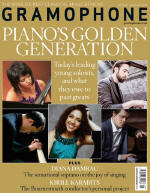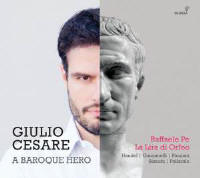Texte paru dans: / Appeared in: |
|
|
Outil de traduction (Très approximatif) |
|
|
Reviewer:
Alexandra Coghlan Today Julius Caesar is all but synonymous musically with Handel’s Giulio Cesare. But, as countertenor Raffaele Pe here demonstrates, the composer’s opera was just the pinnacle of a fashion for Caesarinspired dramas that swept across Italy during the late 17th and 18th centuries. In many ways the recording is a test of history – is Handel’s all-obliterating masterwork really the only musical portrait that merits survival? Pe and collaborators Luca Giardini and La Lira di Orfeo bravely (or perhaps rashly) put Handel’s music head to head with arias by Francesco Bianchi, Niccolò Piccinni, Geminiano Giacomelli and Carlo Francesco Pollarolo. The stylistic span is broad. Between the earliest opera, Pollarolo’s Giulio Cesare in Egitto (1713), and the latest, Bianchi’s La morte di Cesare (1788), we’ve moved from crisp Baroque rhythms to melting Mozartian grace – the latter suiting the cool, patrician playing of La Lira di Orfeo noticeably better. You might be forgiven for expecting a bit more, well, warrioring in these portraits of a great statesman and military hero but it’s as a lover that we see him almost exclusively. Thank goodness for Handel’s ‘Va tacito’ and ‘Al lampo dell’armi’, where Pe can flex his coloratura muscles and give us irony and ferocity to break up all the elegant languishing. That said, taken on their own terms, the Bianchi arias are a treat – emotion carefully folded into beautiful and elaborate melodic shapes. Piccinni’s too, especially the carefully tragic ‘Tergi le belle lagrime’, are well worth an encounter. With less to distinguish them from Handel’s masterpiece, the earlier works have less to recommend them. I’m not sure Pe would be my first choice for any of this repertoire. His is a solid, uncomplicated voice, but lacks either the Fagioli-style technical flair or Davies-style beauty to set it apart. There are also some slightly odd choices within the programme. Why include the Cornelia/Sesto duet ‘Son nata a lagrimar’ and not any Tolomeo or Sesto arias? And what Ariodante’s glorious ‘Scherza infida’ is doing on a Caesarinspired album is anyone’s guess. |
|




